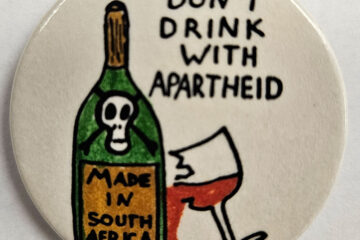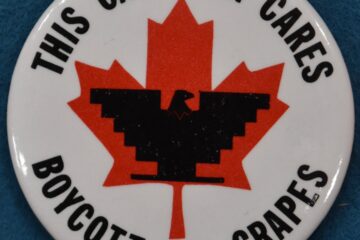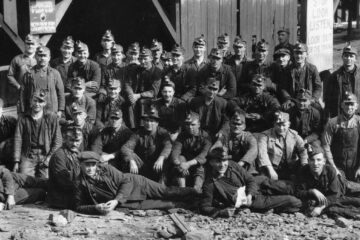Early Labour Day Parades
by Bob McDonald
This article is reprinted from the May 2019 Vancouver Historical Society newsletter. Bob McDonald, one of BC’s leading historians, passed away on June 19, 2019.
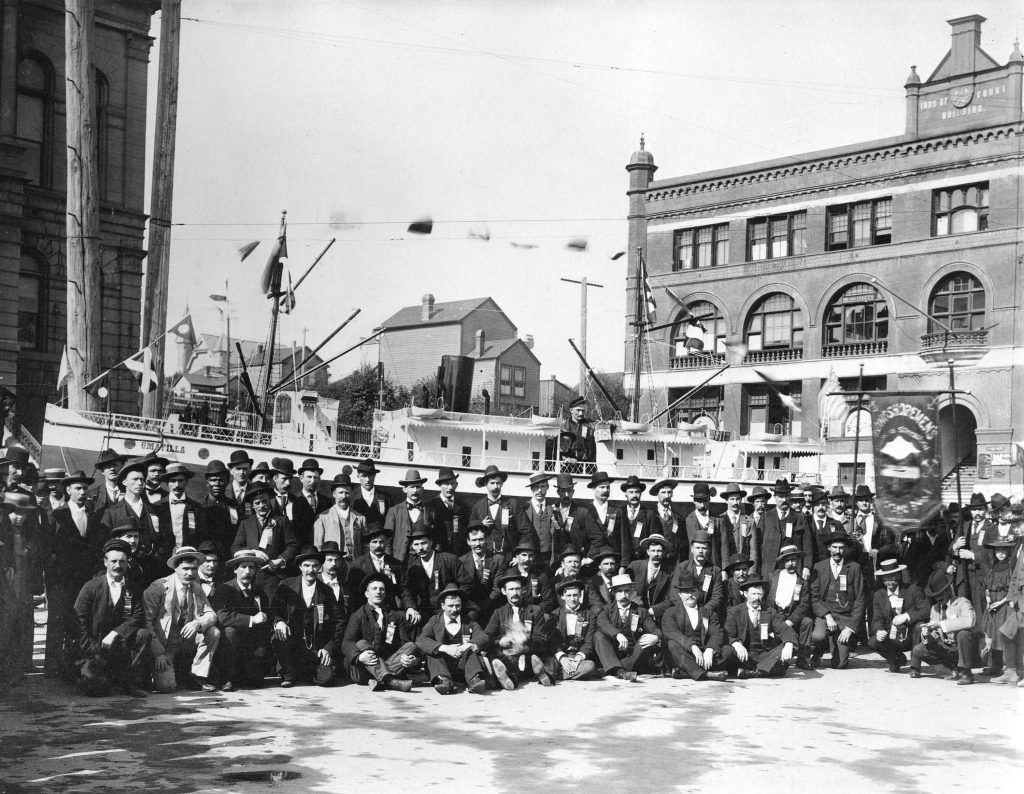 This image is from a Labour Day parade on Hastings Street in Vancouver in the late 1890s. Here we see a forty-foot replica of the S.S. Umatilla, a ship that connected Vancouver and San Francisco. Constructed in 1898 by local stevedores, and named for the village of Umatilla on the Columbia River, the miniature vessel belched steam along the entire route of the Labour Day procession with upwards of 140 marching longshoremen eyeing their creation proudly from behind. Labour Day parades, which began on 6 September 1890, featured numerous such examples of floats constructed by unionized workers. Along with the S.S. Umatilla, the best known is a wooden, craftsmen-style house built for the 1903 parade by members of the Amalgamated Society of Carpenters and Joiners.
This image is from a Labour Day parade on Hastings Street in Vancouver in the late 1890s. Here we see a forty-foot replica of the S.S. Umatilla, a ship that connected Vancouver and San Francisco. Constructed in 1898 by local stevedores, and named for the village of Umatilla on the Columbia River, the miniature vessel belched steam along the entire route of the Labour Day procession with upwards of 140 marching longshoremen eyeing their creation proudly from behind. Labour Day parades, which began on 6 September 1890, featured numerous such examples of floats constructed by unionized workers. Along with the S.S. Umatilla, the best known is a wooden, craftsmen-style house built for the 1903 parade by members of the Amalgamated Society of Carpenters and Joiners.
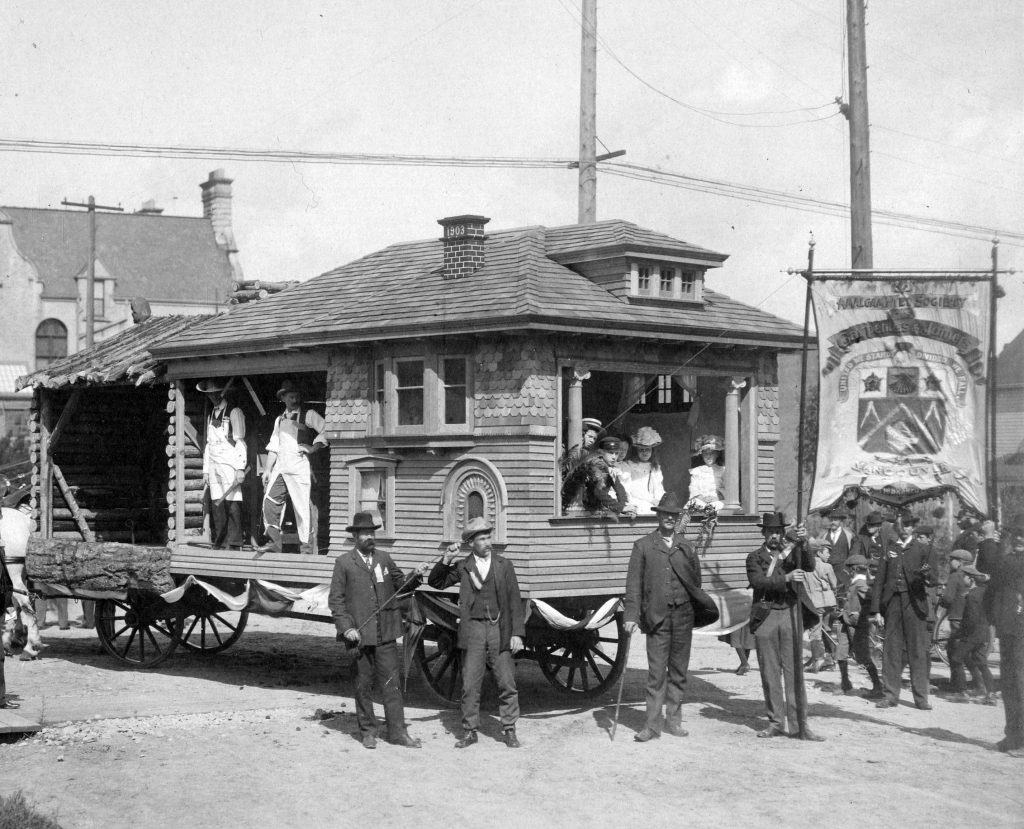
Conveyed through the streets on a horse-drawn float, the replica was accompanied by marching unionists — all men — for whom the parade was an expression of what historian Bryan Palmer has described as “the dignity and essential place of productive labour.” The men assembled for the S.S. Umatilla photo, dressed in their finest garb festooned with “badges richly trimmed with gilt lace,” were claiming social recognition as small producers and citizens, asserting their respectability. Such parades were also restrictive, however, for in Vancouver the conventions of respectability limited street parades to men of British and Northern European heritage, citizens who had the right to vote. For these labouring men, just as important as their call for shorter hours, “fair” working conditions, and democracy was their insistence on Oriental exclusion, an expression of the underlying racism that characterized settler colonialism in British Columbia.
The photo represents the city’s labour movement at its inception, a movement not only smaller but also organizationally different from the one Rod Mickleburgh covered as a labour journalist in the 1970s and 1980s. In the former period trade unionism was dominated by skilled craftsmen organized into unions defined by their craft, in the latter by both men and women of various levels of training and skill drawn from across the multicultural ethnic landscape. White collar workers were emerging as the largest cohort of unionized workers, and starting in 1973 even the provincial civil service enjoyed the right to representation by a trade union.
First photo: Longshoremen on Hastings Street c. 1895, Vancouver Archives, P371
Second photo: The Amalgamated Society of Carpenters and Joiners with their Labour Day parade float at Seymour Street and Dunsmuir Street c. 1895, Vancouver Archives F1 P2
